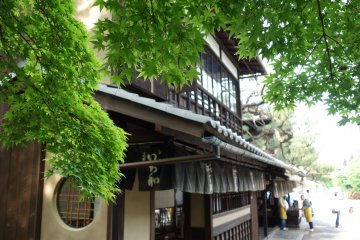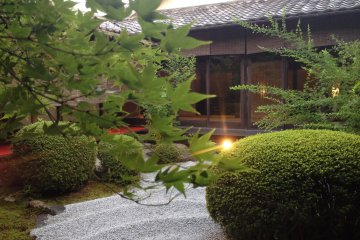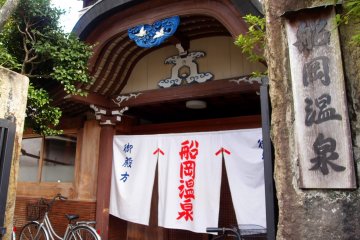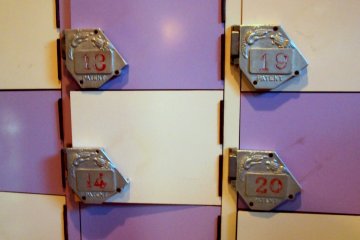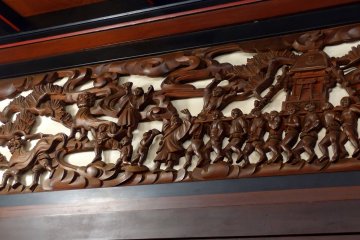Once again, I found myself walking along the quiet streets of yet another suburban neighbourhood. I was on a quest to look for one of the most raved about iconic bathhouses in Kyoto!
It might be due to its proximity to the city center or perhaps it is the history of this public bathhouse that boosts the popularity of Funaoka Onsen. Located at the Kita Ward, Funaoka Onsen was established in 1923 and it has been claimed by the Lonely Planet guide of Japan to be the best bathhouse in Kyoto.
Standing proudly with an ornate entrance, Funaoka Onsen was hard to miss with the multiple bicycles parked outside it. Every once in a while, happy-looking patrons with their ruddy red faces walked out. Occasionally, some tourists would pose at the entrance with big smiles on their faces, undoubtedly trying to capture memories of a relaxing soak.
My first impression of this bathhouse comprises of three words: “small, casual and quaint”. Visibly different from the other onsens that I have visited, this family style bathhouse certainly has character.
Besides the relatively low cost, the atmosphere was very different from the new and polished hot springs. In fact, I believe that the varied groups of patrons also add a unique charm to the old school Funaoka Onsen. Thrown together in a tiny leisure space, the local patrons generously shared their hot bath culture while ignoring bright-eyed inexperienced foreign visitors (like myself!) that hailed from all over the world for the ultimate relaxing soak.
For individuals with tattoos, you would be happy to know that this is one bathhouse that would not turn you away for the work of art on your body.
There are seven leisure pools and a sauna for one to enjoy at Funaoka Onsen. Amongst those that stood out from the usual pools of varying temperatures are the aged cypress wood bathtub (that smells really good!), Jacuzzi with strong jets, outdoor pool and an electric bath.
Yes, you saw right. Funaoka Onsen has an electric bath that can send one’s nerves into a crazy frenzy! None of my friends could believe it when I told them about this electric bath. Well, to use an analogy – just imagine one dipping an uncooked tempura into the deep fryer. At least that was how I felt to be ‘electric-fried’ in a pool.
Lasting for less than a minute in the electric pool, I scrambled out to the tranquil outdoor pool to calm my frazzled nerves and pounding heart. I have no idea how this queer experience would benefit me in terms of health and beauty but I have decided to stick to the boring but therapeutic norm!
The significantly low entry costs signify a no-frills facility. Hence, it is recommended to bring your own toiletries and towel unless you do not mind paying extra for it. Even the use of hairdryer requires ¥300.
Before you leave, history buffs would be delighted to know that traces of Japan's past can still be seen within the bath areas of Funaoka Onsen. Do keep a lookout for the beautiful carved wood panels that ran along the wall near the ceiling, especially those that separate the dressing rooms of both genders.
Created during the 1930s when Japanese troops invaded Manchuria, these artworks tell stories of a brutal past that are not always openly discussed. The good quality elm coupled with the impeccable skills of the artist also left a legacy to the (sometimes) forgotten past.
While I would not go as far as to endorse Funaoka Onsen as the best bathhouse in Kyoto, it certainly is unique and worth a try.
PS: Did you know that the first electric bath in Japan is reportedly to have been installed at Funaoka Onsen?





